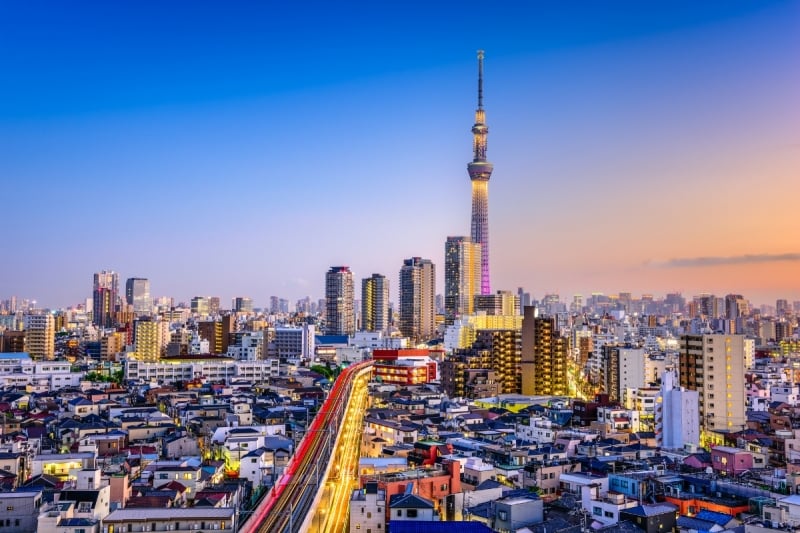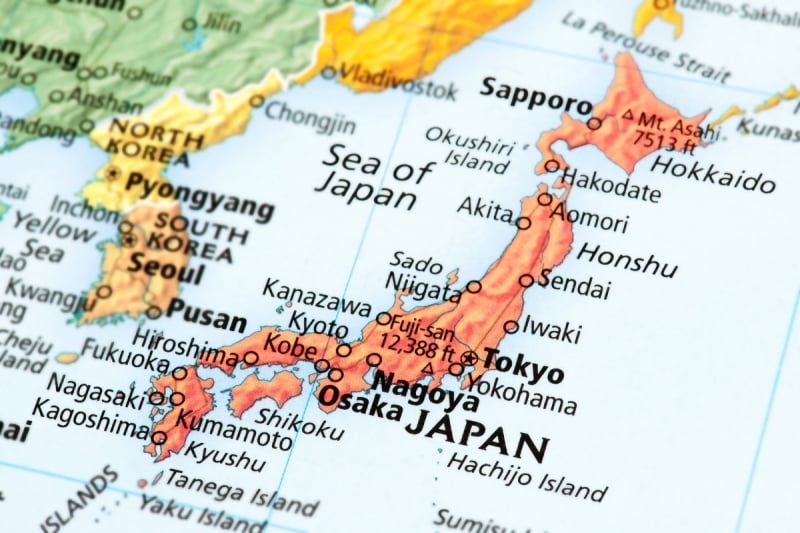The near-total collapse in China–Japan travel bookings is already rippling through Asia. In Japan, empty seats on flights, softer hotel occupancy, and thinner crowds at major attractions could turn into a short-term advantage for visitors from Southeast Asia, Australia, and Europe. Yet those cancelled trips will be redirected. Millions of Chinese holidaymakers are expected to pivot to destinations like South Korea, Thailand, Singapore, and Malaysia, putting pressure on room availability and peak-season fares elsewhere. A diplomatic row has become a tourism reset, and visitors across Asia will feel its impact.
How the China–Japan travel slump unfolded

Image credit: Sergdid (left), Balazs Simon (right) via Canva Pro
The downturn began on 7 November, when Japan’s Prime Minister Sanae Takaichi told parliament that a Chinese attack on Taiwan could create a “survival-threatening situation” for Japan, a scenario that could justify military involvement. Beijing reacted sharply, condemning the remarks, summoning Japan’s ambassador, and accusing Tokyo of interfering in China’s internal affairs. China’s embassy then urged citizens to avoid non-essential travel to Japan, warning of “significant personal safety risks.” Soon after, major Chinese airlines introduced free refunds and waived change fees for Japan-bound trips, which triggered an immediate and unprecedented wave of cancellations.
Numbers to watch

Image credit: Gece33 via Canva Pro
The scale of the impact has raised concern across the travel sector. The cancellation of 491,000 tickets represents 32 per cent of all China-to-Japan bookings. Flight disruption rates of more than 80 percent on the first day show how sharply demand has declined. In addition, Japan welcomed 7.49 million Chinese visitors between January and September 2025, making China one of its most important inbound tourism markets. The sudden drop in arrivals is already affecting hotels, restaurants, and retailers that rely heavily on mainland tourist spending.
Should Japan worry?

Image credit: Sean Pavone via Canva Pro
The rapid wave of cancellations has created concern among Japanese tourism stakeholders. Retailers and hospitality businesses are adjusting expectations, especially for the winter period when Chinese tourist flows are typically strong.
However, Japan is moving quickly to reposition itself. Tourism boards and travel companies are ramping up marketing efforts in Southeast Asia, Europe, and Australia. Airlines may reallocate capacity to other markets to compensate for weaker Chinese demand.
While the immediate financial impact is significant, the tourism sector appears ready to diversify and reduce its reliance on a single source market. The broader impact will be felt across the region. Japan may feel noticeably less crowded in the coming months, with shorter queues at key attractions and more hotel availability in major cities.
Will others benefit?

Image credit: Dimaberlinphotos via Canva Pro
In the short term, absolutely. With fewer mainland Chinese visitors, Japan will experience:
- Cheaper hotel rates
Properties that rely heavily on the Chinese market may adjust prices to protect occupancy. Travellers from Southeast Asia or Australia could find better-than-usual deals, especially in major cities and popular hot spring towns. - More seats and potentially lower fares
With airlines pulling flights from China routes, capacity on other international routes may loosen. Travellers may see more availability, last-minute seats, and occasional fare drops as carriers rebalance operations. - Less crowding at major attractions
Spots such as Shinjuku Gyoen, Fushimi Inari Shrine, Mount Fuji viewpoints, and Hokkaido’s scenic sites could feel noticeably calmer. For travellers who prefer slow travel and quieter sightseeing, this is a rare window. - Easier restaurant reservations and transport access
Queues may shorten, taxis may be easier to catch, and reservations at high-demand restaurants could open up.
Other visitors can stand to benefit, especially in the next one to three months before the market recalibrates.
Where will Chinese travellers go instead?

Image credit: Pr image factory via Canva Pro
Those hundreds of thousands of cancelled Japan trips will not simply disappear. They will be diverted, and that shift will reshape travel patterns across Asia.
- South Korea
Always a strong alternative to Japan, South Korea offers food, shopping, winter activities, and pop-culture appeal. Seoul and Busan are likely to absorb the first wave of redirected travellers. - Thailand
With no visa requirements, wide flight connectivity, and strong value for money, Thailand stands to gain significantly. Destinations such as Bangkok, Phuket as well as Chiang Mai may see demand surge. - Singapore
Safety, shopping, dining, and ease of travel make Singapore a natural choice for affluent Chinese travellers seeking short-haul alternatives. - Malaysia
With a more relaxed pace, strong cultural draw, combined with emerging destinations like Penang and Kota Kinabalu, Malaysia could benefit from the spillover effect. - Emerging contenders
Vietnam, Indonesia, and even the UAE could see increased search interest as Chinese travellers look beyond Japan for holiday options.
What this means for your upcoming trips

Image credit: Iam Anupong via Canva Pro
If you are travelling to Japan:
Expect easier bookings, calmer attractions, and potentially lower prices. This is an unusually good time to visit.
If you are travelling to other Asian destinations:
Expect the opposite: rising hotel prices, faster-filling flights, and busier attractions in cities absorbing redirected Chinese travellers.
For the broader tourism industry:
This geopolitical rift is reshaping travel flows across Asia. Whether the shift is temporary or structural will depend on how the diplomatic narrative evolves.
What could happen next?

Image credit: Omersukrugoksu via Canva Pro
Economists believe the impact on tourism will depend on whether the dispute remains rhetorical or escalates into broader restrictions. If China continues to discourage travel to Japan, the long-term implications could be significant. Chinese travellers accounted for roughly 30 percent of Japan’s tourism spending pre-pandemic. A prolonged pullback could pressure regional airlines, tour operators, and businesses reliant on inbound Chinese traffic.
There is also the Taiwan variable. Any renewed friction across the strait tends to send ripples through East Asian markets, from aviation stocks to hotel bookings. For travellers planning trips in early 2025, analysts advise keeping an eye on embassy advisories and airline policy updates.
The bottom line
The collapse in China–Japan travel demand extends beyond just the diplomatic story. It is a real-time reminder that geopolitics now shapes where, when, and how people move around Asia. For travellers, the coming months will bring a mix of opportunity and uncertainty: cheaper fares but shifting schedules, quieter cities but unpredictable policy changes.
Japan remains an excellent and safe destination, yet travellers should stay alert to evolving advisories and airline updates. As the regional travel landscape recalibrates, flexibility and preparedness will be the smartest tools for navigating a moment where foreign policy and holiday plans are suddenly intertwined.




